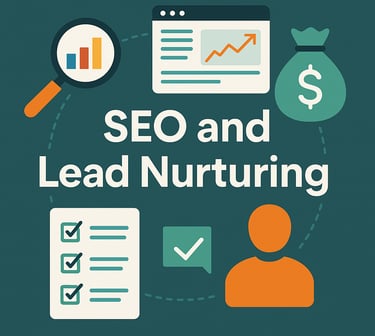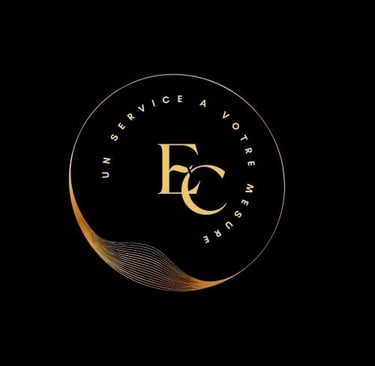2025 Inbound Strategy for Fintech & AI: Beyond Just Traffic
AI and fintech leaders need more than visibility. Discover how to build trust, traction, and multi-channel influence in a post-Google world.In B2B and B2G, inbound isn't for the masses — it's for 2025 decision-makers and prescribers. Build trust, traction, and visibility that matters.
WEBMARKETING
LYDIE GOYENETCHE
6/6/20254 min read


Beyond Traffic: The Quest for Digital Traction
In a saturated digital landscape, U.S. companies in AI and fintech need more than traffic. They need traction. In 2025, inbound marketing is no longer just about Google or paid ads. It’s about earning trust, building relationships across multiple touchpoints, and positioning your brand as a clear voice in a noisy world.
Self-Made Strategy: Grit Meets Digital Presence
If you’ve built your company with grit, vision, and long hours, your digital strategy should reflect that same clarity. Inbound done right isn't fluffy storytelling — it's sharp, strategic publishing. It’s showing up with value before you ever pitch. And it starts with one truth: your best prospects don’t need you — until they do. So when they search, scroll or ask an AI assistant for help, will they find you?
The Rise of Conversational Search in 2025
In 2025, search behavior has evolved far beyond traditional engines. While Google still receives over 8.5 billion queries daily, over 35% of U.S. users under 40 are turning to AI tools like ChatGPT, Claude, and Perplexity as their first reflex. These aren’t marginal shifts. They signal a profound reorganization of how knowledge and recommendations flow. Among fintech and AI decision-makers, more than 62% use AI assistants weekly for industry benchmarking and supplier discovery. A page well-structured, clear, and informative can be cited not only by humans but by machines that curate information for them.
Structured Content as Strategic Infrastructure
AI-powered search tools prioritize structured, high-quality content. They reward brands that publish clearly written use cases, real benchmarks, and actionable knowledge. If you serve B2B or institutional buyers, your presence in these conversational engines is no longer optional — it’s foundational. A 2024 study by Forrester revealed that over 70% of enterprise buyers had already received AI-curated recommendations before their first human contact with a vendor. In government tenders and large-scale procurement, initial filters are increasingly hybrid — part human, part algorithm.
In the Valley of Velocity: Playing for Long Cycles
This reality is particularly true in San Francisco and Silicon Valley, where public and private decision-makers are immersed in high-velocity innovation. Here, digital signals carry weight. Being indexed by AI is no longer just a question of SEO — it’s a strategic lever in high-value, long-cycle deals. Contracts in fintech infrastructure or AI integration often exceed twelve to eighteen months in negotiation. During that time, vendors are being watched, assessed, compared. One insight-rich white paper or case study, well-structured and clearly titled, can be what tips the balance.
AI Inside Government: Bureautic Transformation in Action
In the public sector, AI integration is transforming bureaucratic processes. In 2024, the U.S. General Services Administration (GSA) began deploying AI copilots across procurement, compliance, and internal document management. These systems now assist thousands of government employees daily in reading technical specs, cross-checking provider credentials, and drafting project briefs. That means your documents, if referenced, might be part of a decision long before any meeting is scheduled. Clear HTML, contextual vocabulary, and trust signals in your metadata are becoming competitive differentiators in federal and state-level bidding.
LinkedIn as a Vector of Credible Influence
Meanwhile, on LinkedIn, over 40% of B2B decision-makers in tech and public infrastructure say they discover new suppliers through platform interactions rather than cold outreach. Visibility isn’t about shouting louder — it’s about saying something worth forwarding. Social selling is now relational, not transactional. You don’t automate your way into influence. You show up consistently, comment with depth, share insights that reflect your sector understanding. In long-cycle sales, it’s often the quiet credibility that opens doors. A project manager tags a colleague. A director bookmarks a post. A policymaker reads your brief while evaluating a proposal.
Instagram as Emotional Affiliation and Brand Identity
Instagram plays a different but complementary role. Among next-gen developers and product designers in fintech, 53% say they follow brands they trust for vision and design leadership. It’s not about virality. It’s about identity. What your feed says visually — your team, your working methods, your values — can influence employer branding, community support, and early-stage partnerships. The new social marketing isn’t about flash. It’s about belonging. In an ecosystem driven by open-source collaboration and startup culture, affiliation drives recommendation. If they believe in your why, they’ll carry your what.
Outbound That Echoes the Inbound Intelligence
And yet, outbound still has its place. But not in the old way. The spray-and-pray model is dead. In high-stakes B2B and B2G deals, outbound works when it’s rooted in timing and empathy. An email that references a policy deadline, a DM that mirrors a known challenge in a recent RFP — these are not automations. They’re extensions of the listening work done upstream. The smartest outbound today activates what inbound has already nurtured.
Financial Stakes and Strategic Visibility
The financial stakes are high. The average enterprise-level fintech deal in the U.S. exceeds $250,000 annually in value, with some AI implementation projects surpassing $1 million. These are not impulse decisions. They’re structured deliberations, and visibility needs to match that cadence. A consistent digital presence, anchored in quality content and relational intelligence, reduces friction in these long cycles. It gives stakeholders time to engage, digest, compare.
The Omnichannel Blueprint for Real Impact
In San Francisco, where competition is fierce and attention is a premium currency, the difference between noise and presence is often one thing: clarity. And clarity is built through an omnichannel ecosystem. Your website explains. Your LinkedIn engages. Your YouTube teaches. Your Instagram reveals. Your AI visibility confirms.
Cultivating Attention, Not Chasing Clicks
When done right, inbound isn’t a funnel. It’s a field. You don’t force conversion — you cultivate attention. You don’t rush the sale — you let it land.
The Companies That Win: Signal Over Noise
In 2025, the companies that win aren’t the ones that post the most. They’re the ones whose messages move with coherence across time, across formats, across minds. They build trust by being found — by people and by machines — exactly when needed, and in a voice that sounds like truth.
If you're ready to stop chasing leads and start attracting real interest, let’s talk together: euskalconseil@gmail.com


EUSKAL CONSEIL
0033782505766
euskalconseil@gmail.com
This website uses only Plausible Analytics, a privacy-friendly web analytics tool.
No cookies are used, and no personal data is collected from visitors.
The system is fully compliant with the General Data Protection Regulation (GDPR), the ePrivacy Directive, and CNIL recommendations.
You can read more about Plausible’s data policy here: https://plausible.io/data-policy